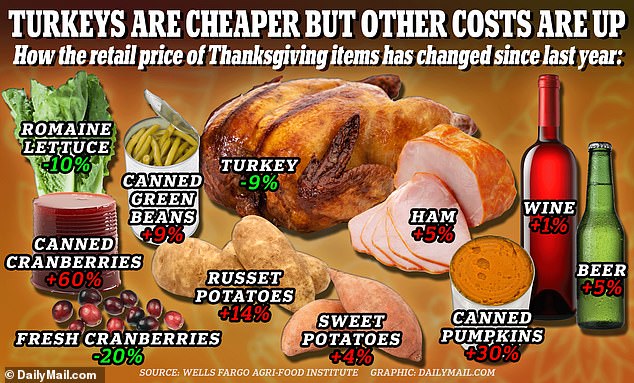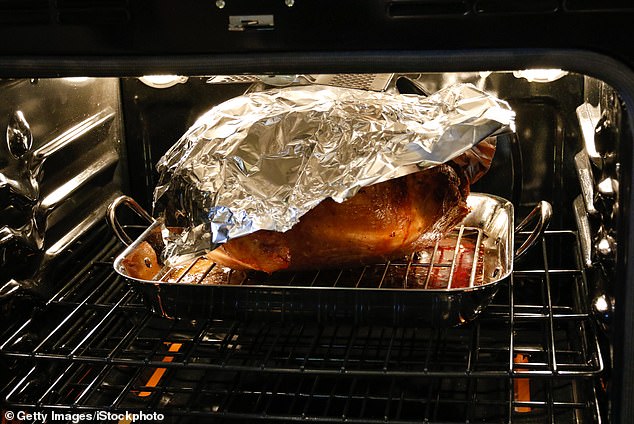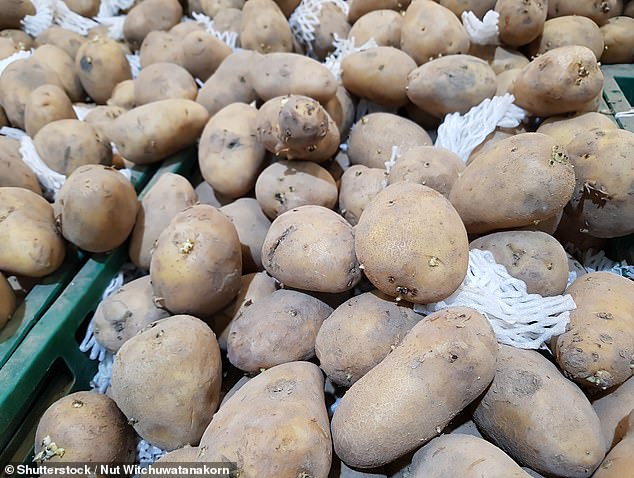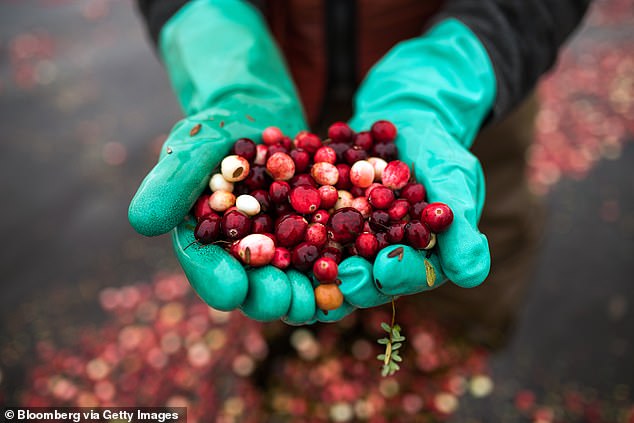How the cost of YOUR Thanksgiving dinner has ramped up this year: Potatoes, canned cranberries and ham are all on the rise – but turkey prices FALL in time for holiday season
- The cost of a whole fresh turkey has dropped this year, but other staples have risen
- While retail turkey prices have fallen, wholesale costs have fallen faster
- As the holidays approach, retailers may come under pressure to pass on these savings
The cost of turkeys has dropped nearly ten percent since last year, but Americans can still expect to pay a little more for Thanksgiving dinners this holiday season.
“Despite food inflation having eased to 2.4 percent since last October, this year’s celebration will be no less expensive,” a report from the Wells Fargo Agri-Food Institute warned.
That’s because the cost of other typical Thanksgiving groceries is rising, including ham, potatoes, pumpkin and canned cranberries.
And while turkey prices have fallen, the institute’s chief economist suggested they will likely continue to fall before the Thanksgiving weekend.
“Each year, retail turkey prices fall sharply as we approach the all-important Thanksgiving Day buying rush,” the paper’s authors wrote.

The cost of whole fresh turkeys has dropped nine percent since last year, but the price of most other Thanksgiving items has increased, according to an article from the Wells Fargo Agri-Food Institute.

Turkey costs will likely continue to decline before the Thanksgiving weekend, the institute’s chief economist suggested
“Retailers use turkeys as a key driver of store traffic, with 84 percent of whole fresh turkeys sold in November.”
As it stands, retailers are enjoying wholesale turkey prices that are 30 percent lower than last year, but much of that is not being passed on to consumers.
“Consumers are unlikely to see the full benefit of the decline in wholesale turkey prices,” the report said.
‘That’s because there are record price differences between the wholesale price that supermarkets pay and the retail prices that consumers pay.’
Nevertheless, as Thanksgiving Day approaches, pressure will increase on retailers to bring down price tags.
A similar premium is being charged by retailers for ham, which reached a record high retail price of $4.56 per pound in September – more than 5 percent more than last year.
Canned goods may be more expensive overall this year, with canned cranberries up as much as 60 percent and canned pumpkin up 30 percent.
Although less premium is paid on potatoes, sweet potatoes are now 4 percent more than last year. Russet potatoes, most of which come from Idaho and Washington, cost $1.17 per pound in September.

Russet potatoes, most of which come from Idaho and Washington, cost $1.17 per pound in September, according to the Wells Fargo Agri-Food Institute

Although canned cranberries are 60 percent more expensive this year than last year, fresh cranberries are down 20 percent
The Agri-Food Institute suggested that Americans could get better prices if they live in the states where the goods come from.
“For consumers on the East and West Coasts, meal ingredients travel many miles to the table, unlike consumers in the Midwest.” reading the newspaper.
Americans will experience some relief when it comes to lettuce. Last November, weather and disease hampered the lettuce harvest, but this year salads are an ‘economical option’. Romaine lettuce is about 10 percent less than a year ago.
Finally, when it comes to beer and wine, consumers can also expect to pay more. But while beer is about 5 percent more expensive, wine is only one percent more expensive.
“The global supply of wine makes it difficult for domestic producers to raise prices, and the recovery of the global shipping market will ensure wine reaches stores before the big celebration,” the report said.
